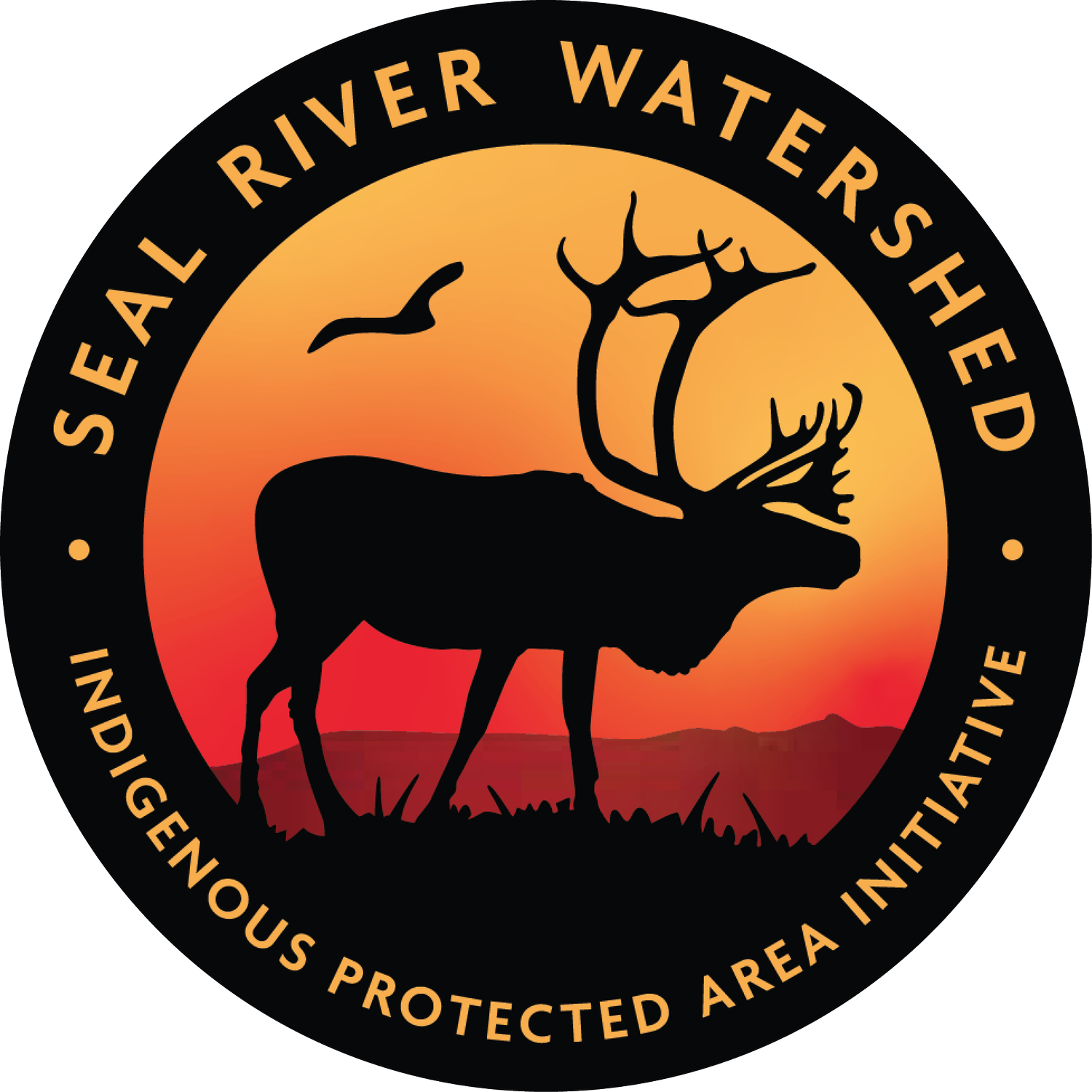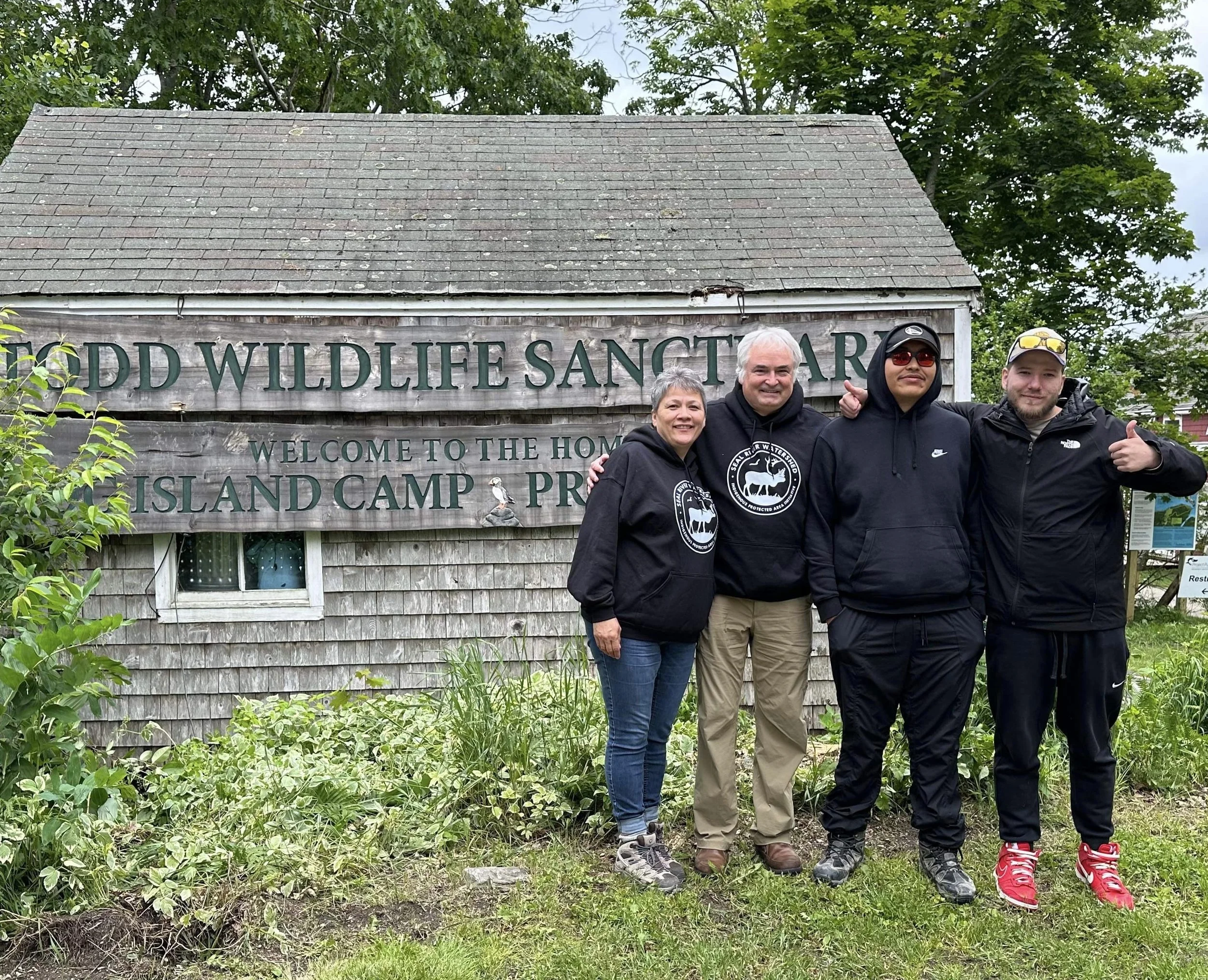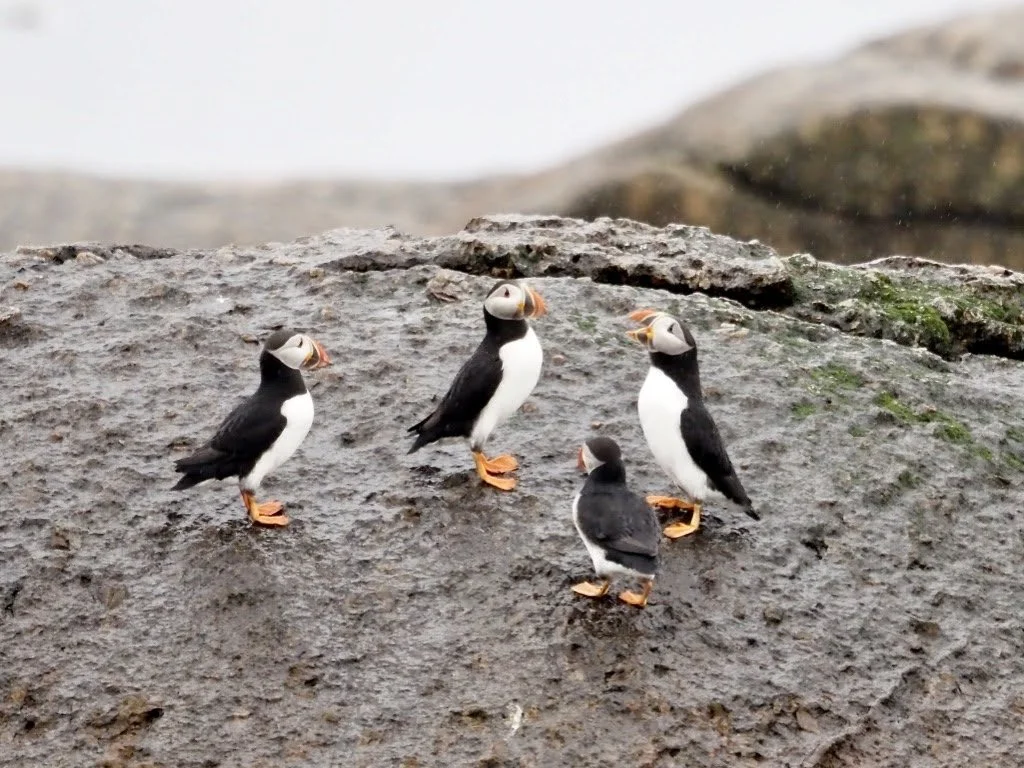Guardians Gain Training at Center for Bird Research
July 12, 2023
By Chaz Collier
Last month I found myself on a boat traveling toward Hog Island off the coast of Maine. I had never been to the Atlantic Ocean before, and I couldn’t believe how beautiful it was when the island appeared through the fog.
I was traveling with Lianna Anderson from OPCN and Darryn Yassie from Tadoule. We had been invited to attend a training at Hog Island Audubon Camp. The National Audubon Society is a partner of the Seal River Watershed Alliance and has collaborated with SRWA on research about migratory birds in the watershed. Dr. Jeff Wells, the Vice President for Boreal Conservation at Audubon, suggested we come to Hog Island to learn more about birds, habitat, and research techniques.
Hog Island is famous among birders for it’s incredible contributions to the western science of ornithology. It draws passionate bird lovers from around the world. When we arrived and people found out I wasn’t a birder, they couldn’t wait to convert me.
Fast forward a few days, and I became a birder. Suddenly a whole new world has opened up for me. Birds used to sound like mumble jumble to me, but now when I hear a bird singing, I tune in and notice the different songs of each one.
I learned so much on the island. Each day we did fieldwork, and the instructors were masters, pointing out everything we saw and teaching us as we went. The first outing was by boat along rivers to track waterfowl and osprey. We also went to Allen Island to do some bird banding, which helps collect data for the following season’s migration.
The next day we went to Easter Egg Rock to see puffins—hundreds of them! I’d never seen them before. I loved watching them hunt and stuff fish in their mouth. They were awesome.
In the evenings, we had labs where we learned about bird behavior, migration patterns, habitats, and avian history. Using sitting still in a study sessions wouldn’t be my thing, but these labs were so engaging and full of information I wanted to learn.
I’m already applying these lessons back home. I’ve started monitoring birds in my community and noticing how they are acting in their habitat. I can also see the potential for sustainable tourism opportunities focused on birding.
The Seal River Watershed is a critical migratory route and breeding grounds for a huge number of waterfowl like black scoters and long-tailed ducks. It’s home to so many bird species, including sandpipers and passerines.
There are huge gaps in scientific data about birds that migrate through northern Manitoba. SRWA Land Guardians can help fill in the missing information. We have eight bird monitors set up in the watershed, and we will continue pulling data from these recordings and setting out more monitors in the future. Combining traditional knowledge and western data will help us care for birds within the watershed for generations to come.



